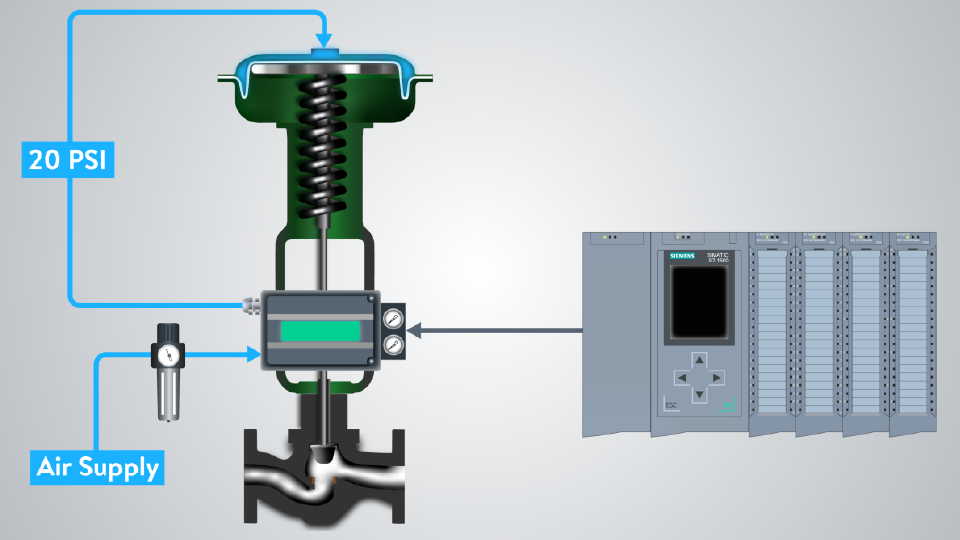Cutting-edge Control Valves: Enhancing Accuracy and Dependability
Cutting-edge Control Valves: Enhancing Accuracy and Dependability
Blog Article

Maximize Energy Cost Savings and Comfort With Advanced Structure Automation Controls
In the world of contemporary design and facility monitoring, the integration of advanced structure automation manages stands as an essential improvement. By utilizing the power of automation, structures can adjust, react, and develop in means that were when unbelievable.
Energy Effectiveness Perks
Power efficiency advantages can dramatically reduce energy usage and functional expenses in structures. By carrying out energy-efficient techniques and technologies, building owners and operators can accomplish significant savings while also adding to environmental sustainability. Among the key benefits of boosting power performance in buildings is the reduction of energy expenses. Energy-efficient systems, such as innovative structure automation controls, can maximize making use of resources like heating, lighting, and cooling, leading to reduced energy costs gradually.
Furthermore, improved power effectiveness can extend the lifespan of structure equipment and systems. By running extra successfully, HVAC systems, lighting components, and other structure elements experience less damage, leading to reduced upkeep and replacement expenses. Furthermore, energy-efficient structures commonly command greater residential or commercial property values and rental prices, providing long-lasting economic advantages to proprietors.
Furthermore, energy efficiency can improve resident convenience and efficiency. Effectively regulated interior environments with optimum lighting and thermal conditions develop a more positive and conducive workspace, leading to enhanced employee satisfaction and performance. In general, the energy effectiveness advantages related to advanced building automation controls are diverse, incorporating cost savings, environmental stewardship, and occupant wellness.
Improved Convenience Control
Enhancing comfort control in building settings calls for a sophisticated integration of advanced automation systems for optimum passenger wellness. By utilizing sophisticated building automation controls, centers can tailor the indoor atmosphere to satisfy the certain needs and preferences of occupants. control valves.
By integrating these sophisticated controls, buildings can not only boost comfort however also boost energy performance by optimizing system procedures based on real occupancy and use patterns. Ultimately, focusing on occupant comfort through innovative automation systems leads to a more delightful and healthier indoor setting.
Operational Performance Improvements

Furthermore, the execution of real-time monitoring and analytics devices enables structure drivers to identify energy ineffectiveness and operational abnormalities promptly. By continuously checking energy usage patterns and system performance metrics, modifications can be made in real-time to enhance power intake and guarantee peak functional efficiency. control valves. Furthermore, integrating need response techniques into structure automation controls can better enhance operational efficiency by dynamically changing power usage based on grid conditions and pricing signals
Indoor Climate Optimization
Efficient interior environment optimization is a basic facet of structure automation controls, guaranteeing residents' convenience and health while making best use of energy savings. By utilizing advanced sensing units and controls, building automation systems can continuously change and check temperature level, moisture degrees, air Extra resources high quality, and ventilation to create an optimal interior atmosphere. Keeping regular and comfy problems not just improves resident complete satisfaction however likewise enhances efficiency and general well-being.
Interior environment optimization additionally plays an essential duty in power effectiveness. By fine-tuning air conditioning, home heating, and ventilation systems based on real-time information and occupancy patterns, developing automation controls can considerably reduce power consumption - control valves. As an example, implementing approaches such as demand-controlled air flow and thermal zoning can help lessen power waste while making sure that each area of the structure receives the essential conditioning.

Sustainable Setting Production
Structure automation manages not only optimize interior climate problems for power efficiency and owner convenience yet likewise lay the foundation for creating a lasting atmosphere via critical administration of systems and resources. By incorporating sophisticated building automation innovations, such as sensors, actuators, and smart software, centers can readjust and check energy usage in real-time to decrease waste and decrease their carbon impact. These systems make it possible for see this website anticipating maintenance, identifying prospective issues prior to they intensify and enhancing equipment efficiency to enhance long life and effectiveness.
Moreover, lasting atmosphere creation prolongs beyond energy monitoring to incorporate water conservation, waste decrease, and indoor air quality enhancement. Building automation controls can control water usage, spot leakages, and guarantee correct waste disposal techniques, adding to overall sustainability initiatives. Additionally, by checking and controlling air flow and filtering systems, these modern technologies enhance owner health and efficiency while decreasing power consumption connected with HVAC operations.
Verdict
To conclude, advanced building automation controls deal significant benefits in regards to power cost savings, comfort control, operational performance, interior environment optimization, and producing a sustainable atmosphere. By applying these controls, structures can achieve optimal efficiency while decreasing energy usage and enhancing owner convenience. It appears that making use of innovative automation modern technology is important why not try here in boosting structure efficiency and developing a much more lasting future.
Energy effectiveness benefits can substantially lower power consumption and operational costs in buildings. Overall, the energy efficiency advantages connected with sophisticated structure automation controls are diverse, including expense financial savings, ecological stewardship, and owner health.
Additionally, incorporating demand reaction strategies right into building automation controls can further boost functional effectiveness by dynamically changing energy use based on grid conditions and rates signals.
Structure automation controls not only maximize indoor climate problems for energy performance and resident comfort but likewise lay the foundation for creating a sustainable environment via strategic monitoring of systems and resources.In verdict, progressed building automation manages offer substantial advantages in terms of power cost savings, convenience control, functional efficiency, indoor environment optimization, and producing a sustainable setting.
Report this page